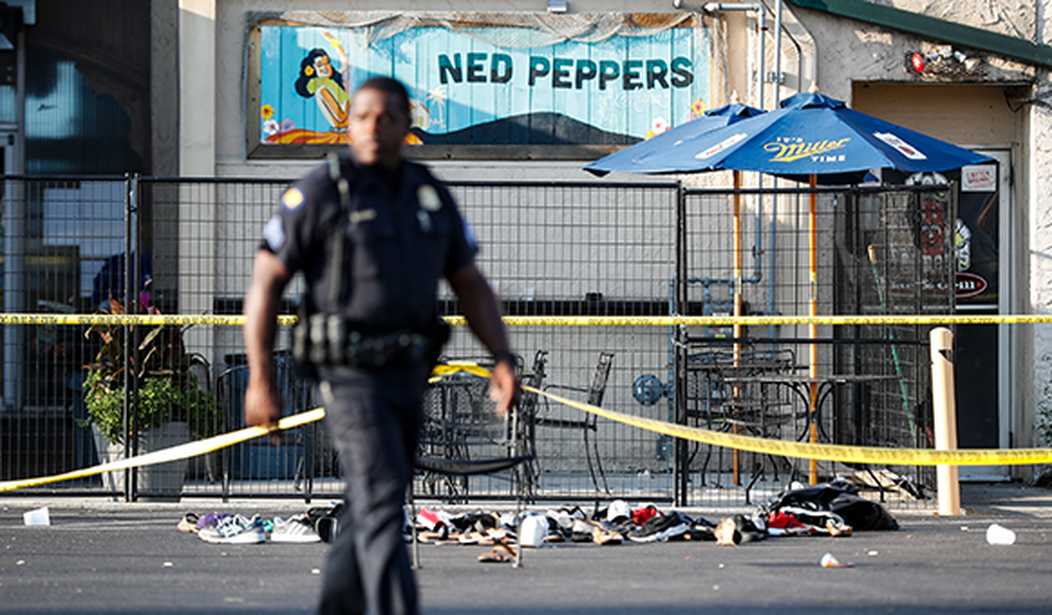The shooting in Dayton, Ohio in August of 2019 that left nine people dead and 27 others injured was carried out by a man with an “enduring fascination with mass violence”, according to a new report from the FBI’s Behavioral Analysis Unit that was released on Monday. The unit, which routinely conducts investigations into motives and the circumstances surrounding an active assailant attack, also found that the killer (whose name will not be used here) “likely violated federal law” when he filled out his Form 4473 while purchasing his gun by not disclosing his drug use.
Beyond that, though, were there any warning signs that the killer’s friends, family, and associates could and should have picked up on? According to the FBI, it might not have been possible to know exactly what he was planning, but there were clear signs that something was wrong.
“The FBI’s BAU assessed the attacker’s enduring fascination with mass violence and his inability to cope with a convergence of personal factors, to include a decade-long struggle with multiple mental health stressors and the successive loss of significant stabilizing anchors experienced prior to August 4, 2019, likely were the primary contributors to the timing and finality of his decision to commit a mass shooting in Dayton, Ohio,” the report stated.
There were no specific warnings that [the killer] would one day commit a crime, the FBI said, despite having “suicidal and violent fantasies” for over a decade.
“This underscores the importance of bystanders’ attentiveness to more subtle changes an individual may exhibit that could be indicative of their decision to commit violence, such as a change in personal circumstances, an increase in perceived stressors, or language indicating they may be contemplating suicide,” the FBI said.
One reason that family and friends did not alert authorities about [the murderer] was potentially because of “bystander fatigue,” according to the report. Bystander fatigue occurs when people around the suspect don’t pay attention or take any action “due to their prolonged exposure to the person’s erratic or otherwise troubling behavior over time,” according to the Behavioral Analysis Unit.
To me, this once again demonstrates the urgent need to improve access to mental health services, particularly for those in crisis. Not because everyone who’s mentally ill poses a threat to public safety. Far from it, actually. For every guy like this, who struggles for years before giving in to his darkest impulses, there are thousands of other Americans who simply exist in a cycle of pain and suffering who also need help but can’t get it. Just check out this report from Springfield, Ohio from June of this year.
“’I’ve been in policing for over a quarter of a century, and mental health issues in our community have always been here, and they’ve always been a challenge,” Springfield police chief Lee Graf said.
Yet, the crisis is growing. Fred Stegner, the president of the Springfield Soup Kitchen, tells me the issue has exploded as he’s encountering people in crisis situations almost every day.
“I call 911. I have a knife-wielding man who is mentally ill. Responses to 911 calls are getting longer and longer because they don’t have the resources,” Stegner said.
Stegner tells me when he called dispatch-they said it would take police over an hour to respond-so Stegner took the man to mental health services, and there was only one bed left for him.
Dr. Greta Mayer, the CEO of Clark, Greene, and Madison County Mental Health Recovery Board, explained that there is capacity and residential beds available on the alcohol and drug side, but they’re experiencing less capacity for inpatient stays.
“I would say we’re seeing less capacity on the inpatient mental health side of things that the caseloads are running full, the beds are full and especially for young people we have to look outside of our area to find beds for young people who may be in a mental health crisis,” Dr. Mayer said.
We need to do more to remove the stigma around mental health treatment, but the top priority at the moment should be expanding access to treatment programs, including inpatient treatment for those with an acute need for help.
There’s another lesson to be learned from the FBI report, and that has to do with “bystander fatigue,” which the Behavioral Analysis Unit defines as “the passivity, inaction, or inattention to concerning behaviors observed by individuals who have a close, interpersonal relationship to a person of concern due to their prolonged exposure to the person’s erratic or otherwise troubling behavior over time.”
In the case of the Dayton shooter, the FBI determined that he had been fantasizing about mass murder for at least a decade. Though the agency says the killer never shared those fantasies with family or friends, the Behavioral Analysis Unit went on to suggest that there were warning signs, and that his decade-long decline demonstrates the “importance of bystanders’ attentiveness to more subtle changes an individual may exhibit that could be indicative of their decision to commit violence, such as a change in personal circumstances, an increase in perceived stressors, or language indicating they may be contemplating suicide.”
In other words, if you see something that sets off your internal alarm bells, don’t ignore it. That’s good advice, but we also have to ensure that if someone does say something, there’s an adequate response on the part of the state. Given the current crisis in our failing mental health systems, there’s no guarantee that will happen. If Ohio lawmakers are looking to “do something” substantive as a result of this tragedy, they should start with adding more beds for those in desperate need of serious help.









Join the conversation as a VIP Member